My Little Town: Reflections on art and commerce
Jay Orff is still thinking about what he saw at the Minnesota State Fair this year - about life and art, commodity and value, about plastic bags knitted into fish and all that money just can't buy.
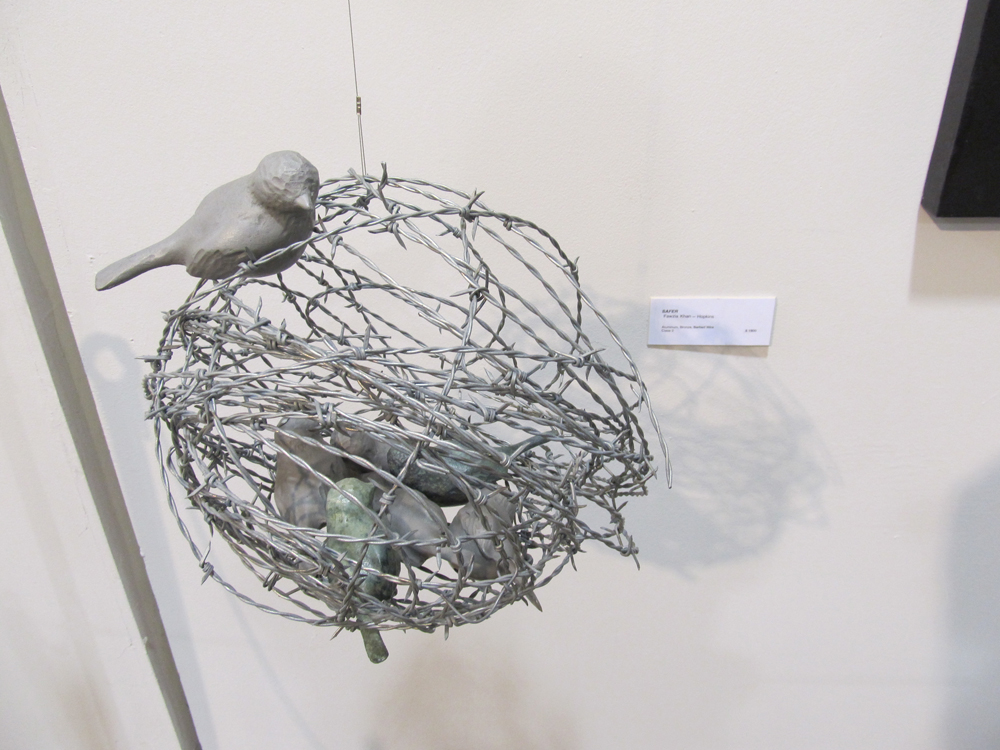
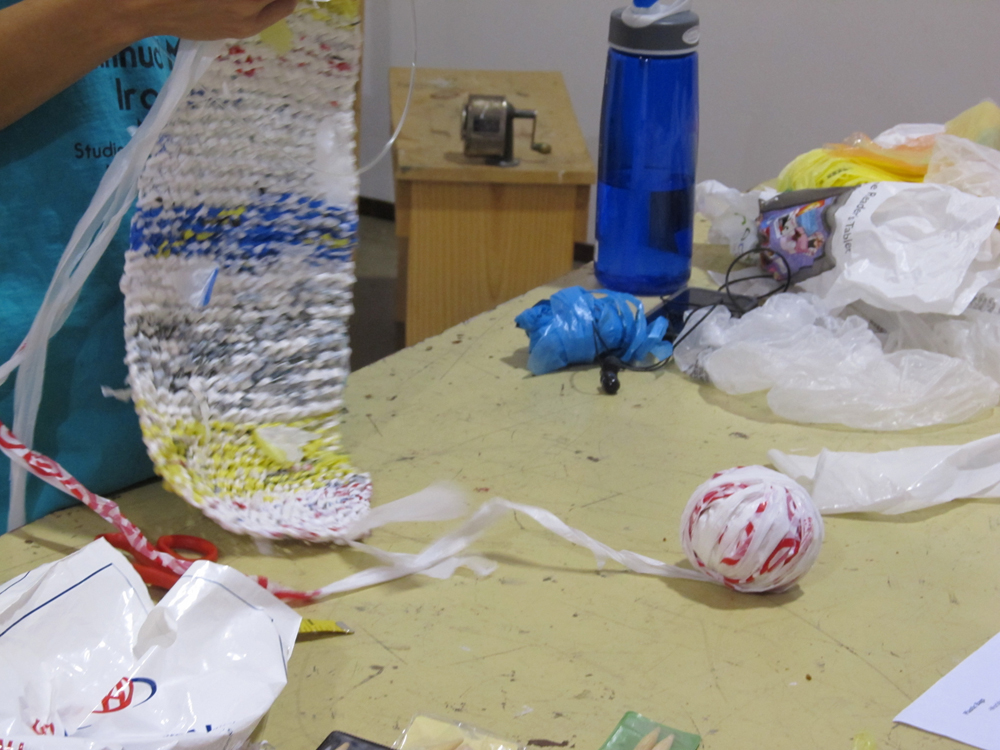
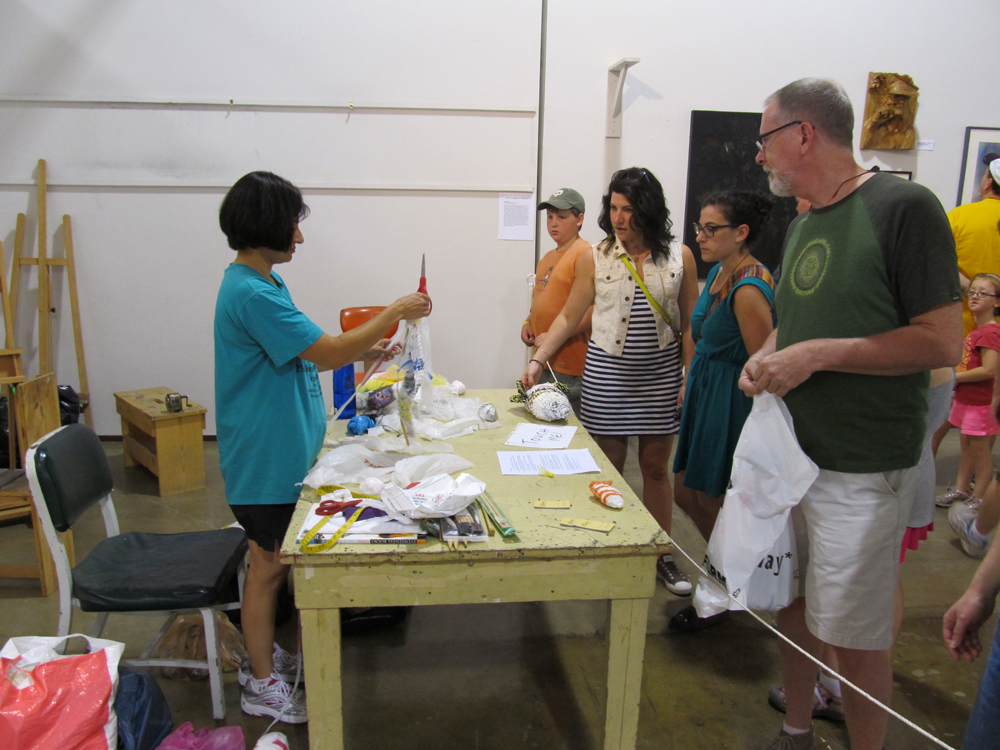
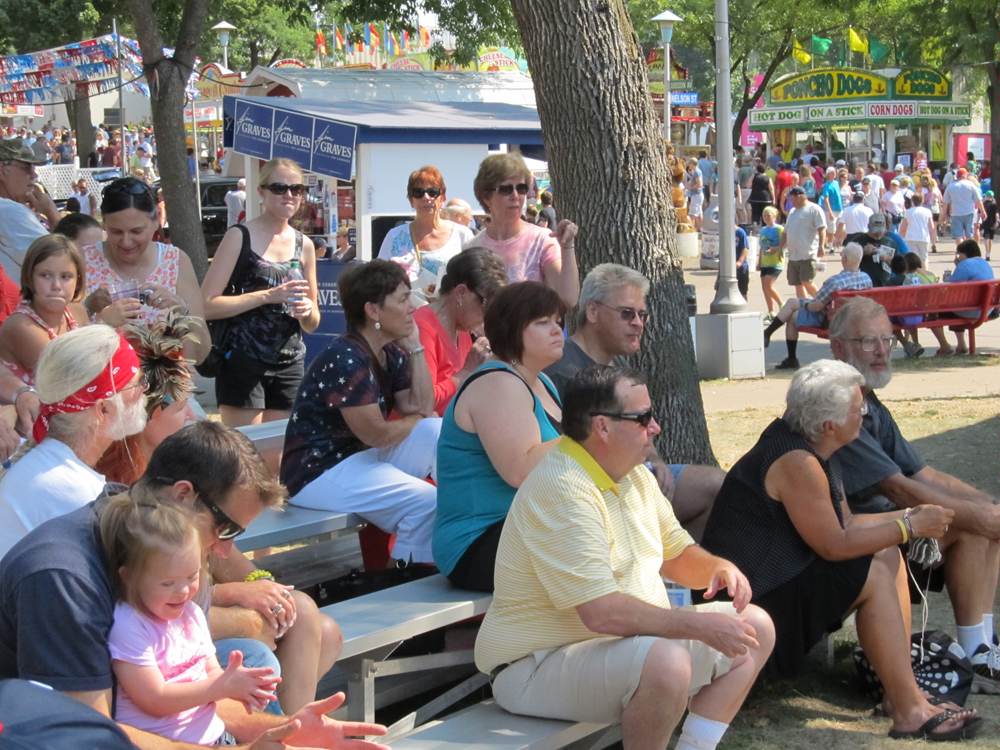


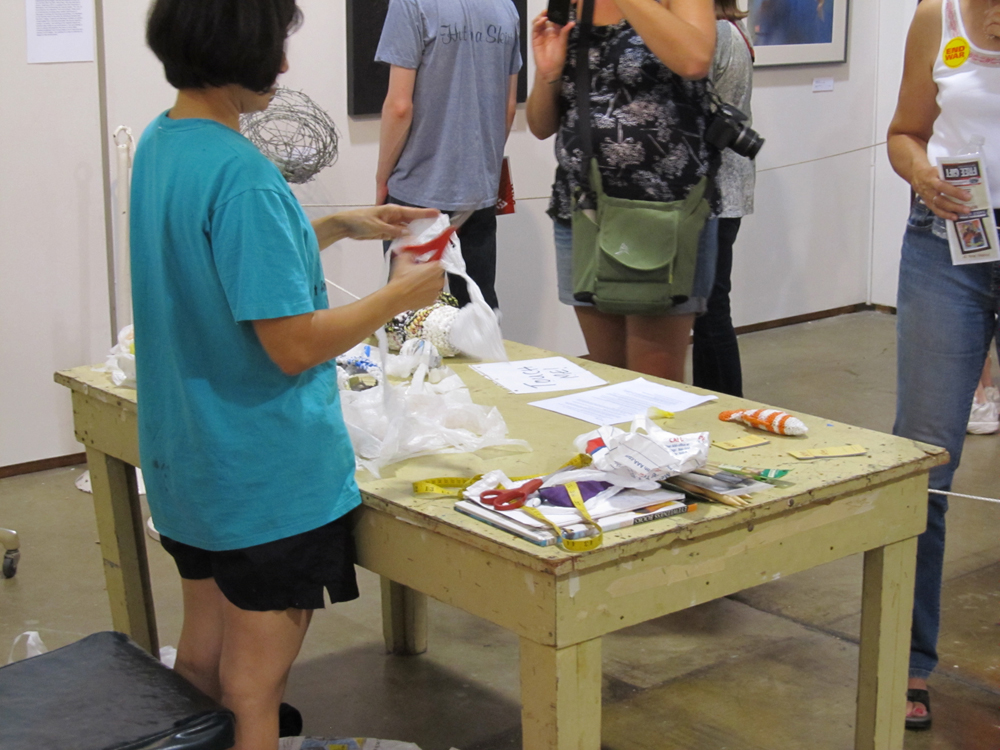
THE GREAT MINNESOTA GET-TOGETHER IS MANY THINGS, to many people. There are plenty of amusements and things to eat and see and listen to, indulgences for every taste. The irony is there’s so much on offer, you can, if you want, avoid precisely the sorts of experiences you’d normally avoid outside the state fair. The livestock are sequestered in barns, so if you’d rather not look into their innocent, curious (or, if it’s a goat, creepy and weird) eyes, but still want to partake in animals, you can buy them ready-to-eat and on a stick from a nearby food booth instead. You might encounter preaching politicians, say, but if politics isn’t your bag, make a zig and a zag, and you’re free.
When I went to the state fair this year, I headed straight to the Fine Arts building, naturally drawn to the sort of place where I could engage in my own preferred ways of thinking, about art and meaning-making and systems of representation; few people are coming to the fair for that, though, most likely. You can skip the art building altogether, of course, just as you can skip going to a gallery out in the wider, non-fair world. I imagine there are people who spend their lives never crossing the threshold of a museum of any sort, just as there are those who never enter a church or go to a rodeo.
This year, fair organizers introduced a fascinating idea to the fine art mix: installing a real live artist in the building, a different person for each day of the fair, and asking him or her to work for 12 hours, creating art live and in-person in front of fairgoers. I only visited the 12’12’12 exhibit one day: The artist at work when I was there, Fawzia Khan, is a sculptor who usually works in cast metal; one of her works in this medium, Safer, was on display, and it is a striking statement on the implications and limitations of safety. But, it turns out, she has begun a new project, one I was intrigued by instantly: she’s been knitting fish out of plastic bags.
First, she creates a ball of plastic by carefully cutting up a bag into a long strip of material; then she knits with it, for hours and hours. It was a project perfectly suited to the State Fair, as Khan plainly intended. She says she has knit since she was six, creating the usual artifacts one gets from knitting: sweaters, socks, a hat. She has wanted to incorporate knitting into her art for some time, she explains, and when the breakthrough idea came — to knit artworks using old plastic bags — it felt like she had come across a new form. (Of course, as is always the case, she soon discovered her idea wasn’t, in fact, altogether new: Ben Cueva knitted a similar sort of skeleton for his piece, Transcending the Material.)
When I first arrived in the Fine Arts building and came upon her, Khan was working, cutting a plastic bag; two of her finished works, a large and a small fish, sat on the table in front of her. A sign reading, “TOUCH ME,” was placed next to them. And so, many did, particularly kids who came by, happy to have permission to interact so closely with an artwork on view. We are usually forbidden such tactile exploration of work in a gallery: the directive to ‘keep off the art’ is clear and repeatedly offered from childhood. Perhaps that prohibition is the source of some of the alienation we tend to feel in such places. But if the work can be touched, does that accessibility mean it’s no longer perceived as “fine art”? Indeed, many of those walking by asked Khan what she planned to do with the fish, what they were for. I doubt they would have posed such a question if she were sitting in front of an easel painting a portrait –“So, you going make a hat out of that painting or what?”
But Khan had invited us to touch the art, after all, and she was cutting up plastic bags, those things we throw away in abundance; what’s more, she was knitting with them. Surely, this was not art, but craft — something purposeful, useful — fairgoers’ responses to her seemed to say. Suggestions were offered: “Perhaps you could use them to scrub dishes.” Or, “Might these be rugs?” Situated here at the fair, not so far from the Creative Activities building, Khan’s artful industry, not to mention her invitation and engagement, offered a certain intellectual dissonance, playing on our preconceptions of what art can be.
A passerby says she would like to have a finished piece, asking “How much do you charge for one of these?” Khan responds: “How much would you be willing to pay for a piece of art?”
It was fascinating to see how easily Khan’s creative, hugely expressive work was seen by fairgoers in this context as something, surely, with utility and tangible purpose. After all, the work is being knit by a woman, so it must have some domestic function, right? If a man were making these knitted fish, I suspect the ripples of confusion would be less pronounced. Some fairgoers tried to resolve the dissonance by incorporating her idea-based work into something more grounded in material commodity, or at least function and utility — something more state-fair-esque. And with her delightful plastic bag-knitted fish, Khan was creating a bridge between that material world and the less purposeful, more abstract, conceptual realm of art and ideas – even if some fairgoers refused her invitation to cross, walking away thinking only of cute, plastic dish-scrubbers.
______________________________________________________
Fairgoers were confounded by Fawzia Khan’s plastic bag-knitted artworks. Suggestions for possible uses were offered: “Perhaps you could use them to scrub dishes.” Or, “Might these be rugs?”
______________________________________________________
“JUST ONE MORE THING TO SPEND MONEY ON.”That’s a snippet of conversation I overheard as I walked through the fairgrounds. I’m not sure what the speaker was responding to, but it doesn’t really matter: This phrase strikes me as a reasonable catch phrase for one angle on the whole fair-going experience. In fact, a pervasive emphasis on commerce and consumption at the state fair keeps many away, I think. The arts section is no different: There were price tags below most everything in the Fine Arts building. In fact, most (but not all) of the work on view was not only for sale, but really expensive — just another commodity, albeit a pricey one, to see, buy and sell.
Of course, you don’t have to spend money at the state fair — you can avoid this, too. But when I first wandered into the Fine Arts building this year, it wouldn’t have occurred to me that the fair would allow the kind of hybrid contemplation Fawzia Khan’s artwork for 12’12’12 invited. She challenged my preconceptions as much as any other fairgoers’, as it turns out.
One of the many works on display in the art building this year was a photograph entitled Marks of Addiction: It pictured a woman with track marks, injecting herself again. In the moment I was looking, two older women also approached, and one said to the other, “Here it is. Look at that!” I didn’t necessarily share her admiration of the piece, but I understood the reaction, the sense of wonder: Look at that, she seemed to be saying, and you will feel something. And I did feel — the offerings in the Fine Arts building this year offered something in addition to simple sensation, something that introduced a little idealism to go with all this materialism, to make us look again at the surface of things and reconsider what we thought we knew. But those artworks also offered an introduction into the materialism of art as well. Plastic bags knit into fish.
You can buy a lot of sensations at the state fair, but you can get a lot more of them for free — and I suspect many fairgoers already know this. We really go to the fair, not to buy, but to look, to listen, to see ourselves and others, and to see ourselves in others — young and beautiful, or old and careful, confused, hateful, hopeful, in love, and everything in between. As I was people-watching this year, I saw other people watching, too — and thinking, considering. We buy what we can, but know none of it is really worth anything, not compared to what we really want — fulfillment, answers, meaning.
______________________________________________________
About the author: Jay Orff is a writer, musician and filmmaker living in Minneapolis. His fiction has appeared in Reed, Spout, Chain and Harper’s Magazine. Read more on www.jayorff.com.